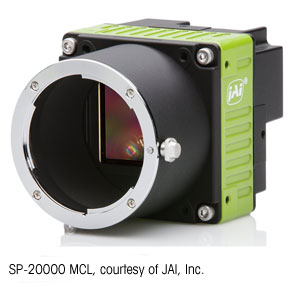
When customers come to JAI to discuss a color application, Kinney starts by asking what sort of spatial accuracy the system needs versus color accuracy. “It also depends on data rate,” he adds. “If you need absolute color accuracy of less than 1%, then we usually look at a three-CCD prism camera solution. If spatial accuracy over a wide inspection area is more important, then a very-high-resolution single-chip Bayer camera may be better. If you need high speed, CMOS offers higher frame rates and multi-line sensors with NIR capability and is very effective for high-speed printing applications where colorimetry measurements are very important because NIR can help you judge between true black ink and black made by combining cyan-magenta-yellow inks. And for some printing applications, knowing the difference is important for quality purposes.”
Daylight in a Box
For imaging applications that need to measure multiple colors, white LED lights have supplanted halogen and fluorescent lights for a number of reasons, including LEDs’ ability to offer a wider range of colors and varieties of “white” light, also referred to as the color temperature.
White LEDs are made one of two ways: by applying a phosphor coating over a blue LED light that produces a broadband light closer to white light, or by mixing different-colored LEDs to make a broadband light source. Both methods result in a spectral continuum that is higher in some narrow wavelength bands within the white light spectrum compared to others. For the most challenging color vision applications, designers need to carefully match these “spikes” to the specific wavelengths. This is where choosing a lighting supplier with in-house engineers can really help, adds Metaphase’s Technical Sales Manager, Mark Kolvites. A quality supplier will make sure that the actual red, green, and blue (or more) LEDs mix to create a white light, or the blue LEDs with phosphor coating provide uniform illumination without hotspots that can cause trouble for automated inspection systems.
As the information above shows, color machine vision solutions can require in-depth knowledge of the physics behind machine vision. The good news is that by choosing the right supplier and partner, designers can solve applications where success isn’t just black and white.
refer to:http://www.visiononline.org/vision-resources-details.cfm/vision-resources/Is-Your-Machine-Vision-System-Color-Blind/content_id/4333
